Creating a Django endpoint: WebSockets to receive encoded frames in Django, decode them, and return a response, while continuously updating the video frame on the web browser.
import cv2
import json
from django.http import JsonResponse
from django.views.decorators.csrf import csrf_exempt
from channels.layers import get_channel_layer
from asgiref.sync import async_to_sync
@csrf_exempt
def process_frames(request):
if request.method == 'POST':
data = json.loads(request.body)
# Extract the encoded frames and other data from the JSON packet
encoded_frames = data['frames']
# Process other data as needed
# Decode the frames using cv2.imdecode()
decoded_frames = []
for encoded_frame in encoded_frames:
frame = cv2.imdecode(encoded_frame, cv2.IMREAD_COLOR)
decoded_frames.append(frame)
# Perform any necessary operations with the frames
# Return a response for each frame
response = {'status': 'success'}
return JsonResponse(response)
For video streaming you can either use browser(HTML) for video rendering or React(JS) for video rendering. Both have its pros and cons.
<!DOCTYPE html>
<html>
<head>
<title>Integrating inside HTML</title>
</head>
<body>
<video id="videoPlayer" autoplay controls></video>
<script>
const video = document.getElementById('videoPlayer');
function updateVideoFrame(frame) {
const blob = new Blob([frame], { type: 'image/jpeg' });
const frameURL = URL.createObjectURL(blob);
video.src = frameURL;
}
// Make a request to the Django endpoint to receive the frames
setInterval(() => {
fetch('/process_frames', { method: 'POST' })
.then(response => response.json())
.then(data => {
if (data.status === 'success') {
updateVideoFrame(data.frame);
}
})
.catch(error => {
console.error('Error:', error);
});
}, 40); // Adjust the interval to achieve the desired frame rate (25 fps = 40 ms delay)
</script>
</body>
</html>
Integrating inside JS
import React, { useEffect, useState } from 'react';
const VideoPlayer = () => {
const [frame, setFrame] = useState(null);
useEffect(() => {
const fetchFrame = async () => {
try {
const response = await fetch('/process_frames', { method: 'POST' });
const data = await response.json();
if (data.status === 'success') {
setFrame(data.frame);
}
} catch (error) {
console.error('Error:', error);
}
};
// Fetch frames at the desired frame rate
const intervalId = setInterval(fetchFrame, 40); // Adjust the interval to achieve the desired frame rate (25 fps = 40 ms delay)
return () => {
clearInterval(intervalId);
};
}, []);
const videoSource = frame ? URL.createObjectURL(new Blob([frame], { type: 'image/jpeg' })) : '';
return (
<video src={videoSource} autoPlay controls />
);
};
export default VideoPlayer;
EDIT
Django endpoint using Django Channels
# This is a template code for using Django Channels
import cv2
import json
from channels.generic.websocket import WebsocketConsumer
class FrameProcessingConsumer(WebsocketConsumer):
def receive(self, text_data=None, bytes_data=None):
if bytes_data:
# Extract the encoded frames and other data from the JSON packet
data = json.loads(bytes_data.decode())
encoded_frames = data['frames']
# Process other data as needed
# Decode the frames using cv2.imdecode()
decoded_frames = []
for encoded_frame in encoded_frames:
frame = cv2.imdecode(encoded_frame, cv2.IMREAD_COLOR)
decoded_frames.append(frame)
# Perform any necessary operations with the frames
# Return a response for each frame
response = {'status': 'success'}
self.send(json.dumps(response))
@csrf_exempt
def process_frames(request):
if request.method == 'POST':
data = json.loads(request.body)
# Extract the encoded frames and other data from the JSON packet
encoded_frames = data['frames']
# Process other data as needed
# Decode the frames using cv2.imdecode()
decoded_frames = []
for encoded_frame in encoded_frames:
frame = cv2.imdecode(encoded_frame, cv2.IMREAD_COLOR)
decoded_frames.append(frame)
# Perform any necessary operations with the frames
# Return a response for each frame
response = {'status': 'success'}
return JsonResponse(response)
Make changes as per your requirements.
Hope this helps...

